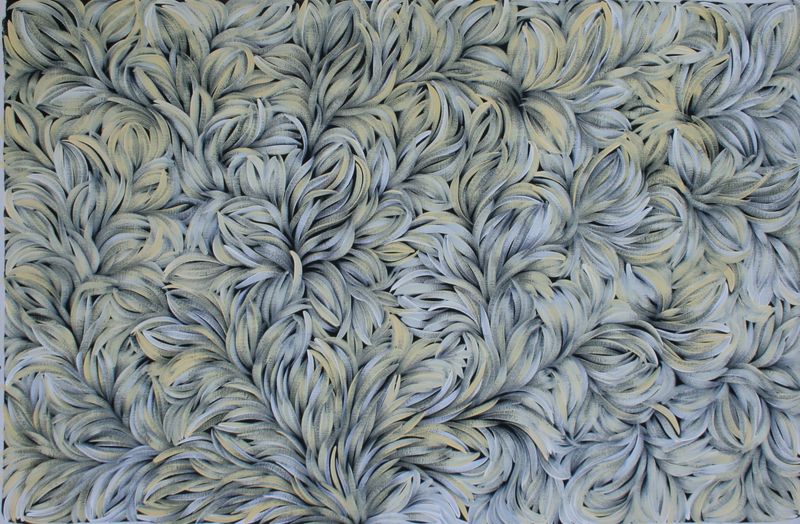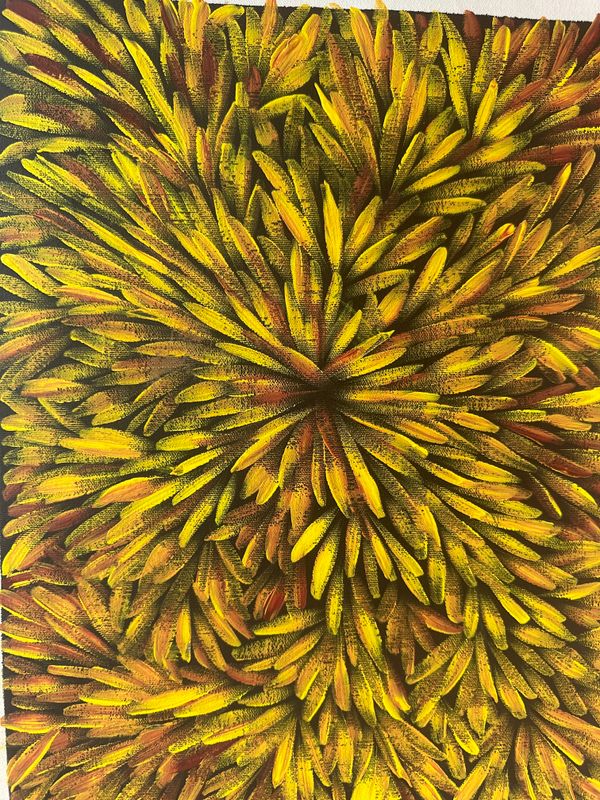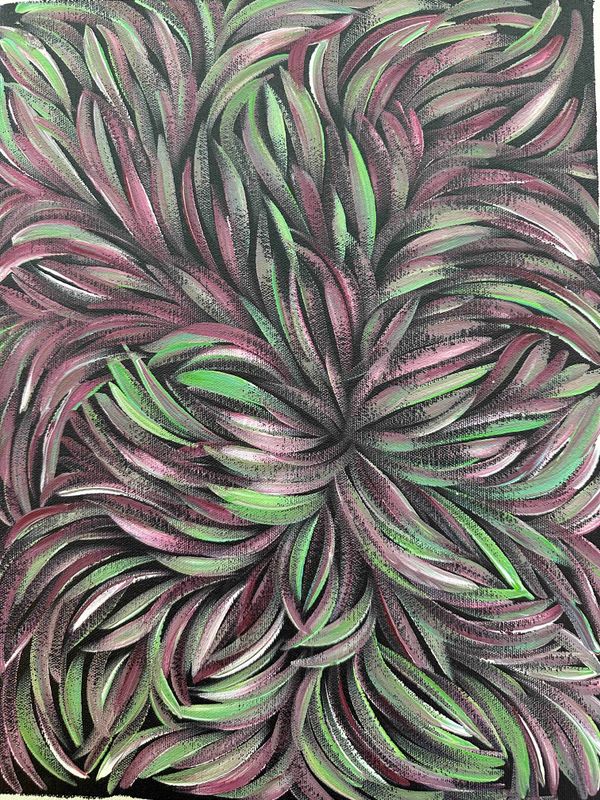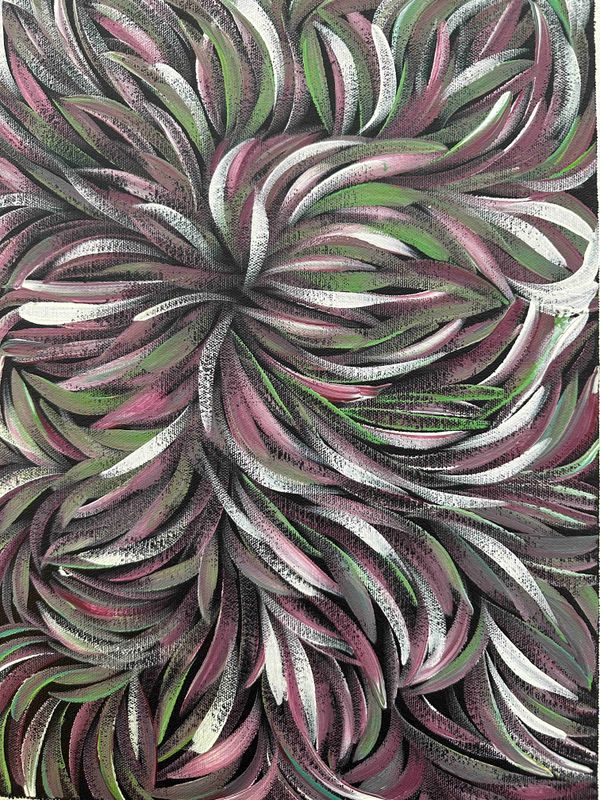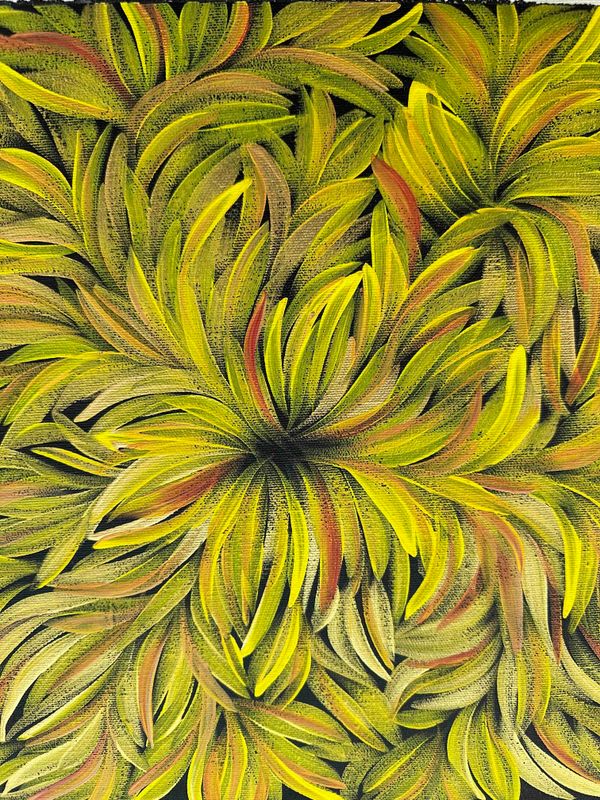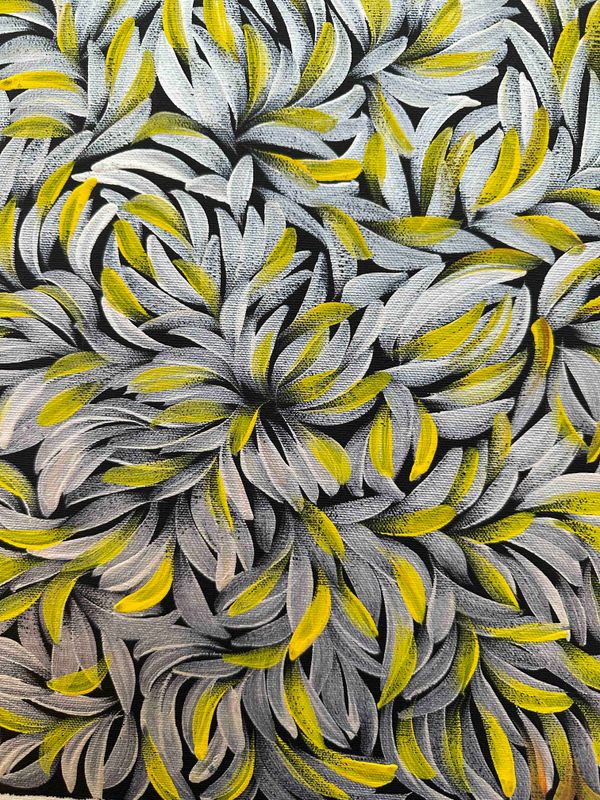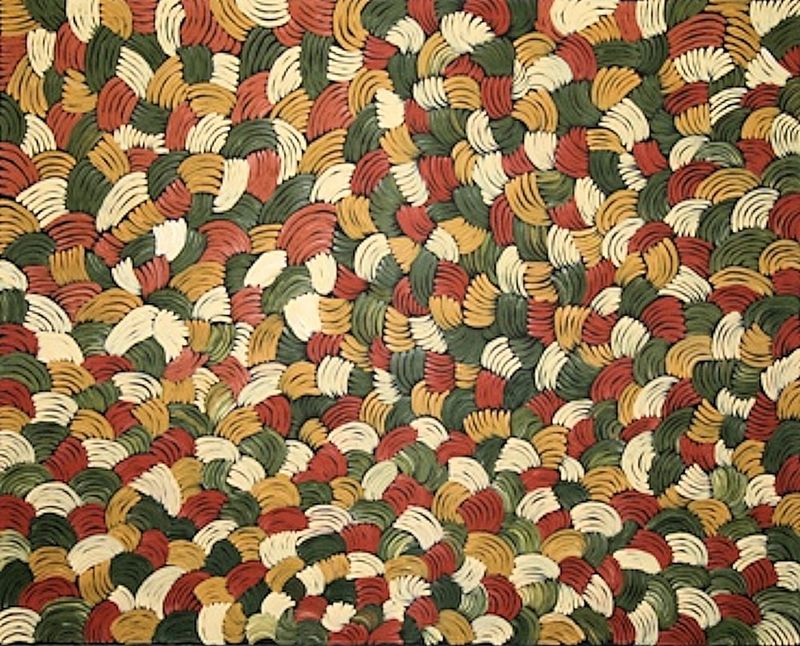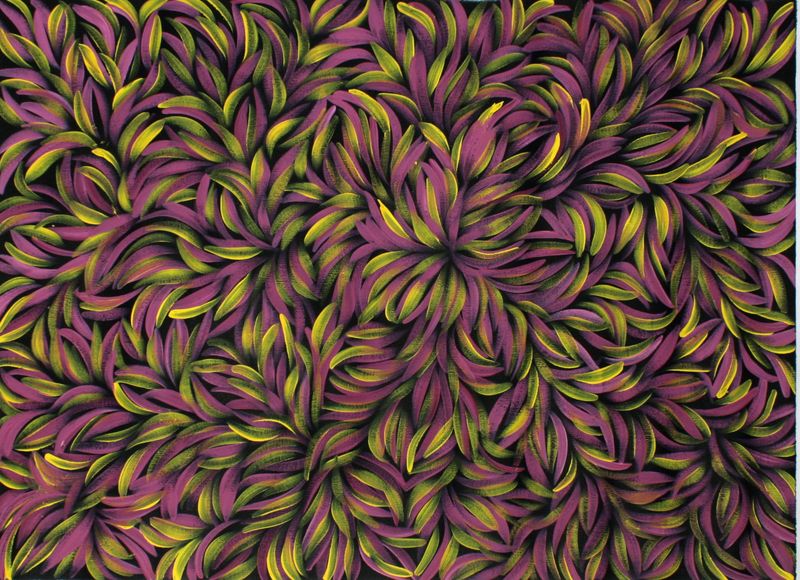Margaret Scobie
Margaret comes from one of the most renowned artistic families in Australia. Her aunt was the late, great Emily Kngwarreye, and her cousins include internationally acclaimed artists Kathleen and Gloria Petyarre.
Margaret has been painting since she was young and, under the guidance of her cousin Gloria Petyarre, began painting the Bush Medicine Leaves series. She has since developed her own unique style and has become a major artist in her own right. Her work is known for its vibrant colors and has become highly popular among collectors.
Margaret Scobie belongs to the Anmatyerre community from Utopia, just north of Alice Springs. She has passed on her knowledge and painting style of Bush Medicine Leaves to her granddaughter, Jacinda Hayes.
The Bush Medicine Leaves is a well-documented dreaming painted by the women artists of Utopia in Central Australia. The flowing motion and undulating rhythm of the subject matter reflect the importance of the bush medicine leaves to traditional Aboriginal culture. The leaves, collected by the women, are highly prized for their restorative powers as part of traditional medicine practices.
The bush medicine leaves come from a particular native shrub (the Kurrajong or Kurrawong) that grows abundantly in the desert regions of Utopia. Throughout the plant's life, the leaves change color and exhibit different medicinal properties. The artists represent the leaves as they float to the ground, using a range of brush strokes and colors to depict the leaves at various times of the year.
When the leaves are green, they are gathered by the women and ground up using a stone. The medicine leaf compound is then mixed with water to form a milky solution used to cure coughs, colds, and flu-like symptoms. The leaves can also be boiled to extract resin, which is mixed with kangaroo fat to create a paste that can be stored for six months in bush conditions. This resulting medicine is used to heal cuts, wounds, bites, rashes, and serves as an insect repellent. The leaves can also be made into a mixture to apply to aching joints or placed on the temples to cure headaches.
Knowledge of bush medicine has been passed down through generations over thousands of years and is still used today by the people of Utopia. In painting the Bush Medicine Leaf story, the artists of Central Australia pay homage to the spirit of the medicinal plant. By creating its image, the artists encourage the regeneration of the bush medicine plant, ensuring its continued benefit for their people.
Gloria Petyarre initially developed the style and representation of the Bush Medicine Leaf story. Other artists from her clan group have continued to paint this story, including Rosemary Petyarre, Jeannie Petyarre, Margaret Scobie Napangardi, Louise Numina, Sharon Numina, Selina Numina, Abie Loy Kemarre, and Janet Golder Kngwarreye.

